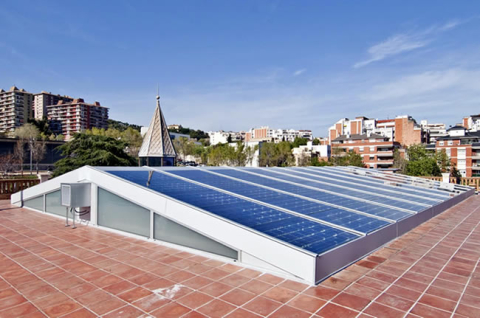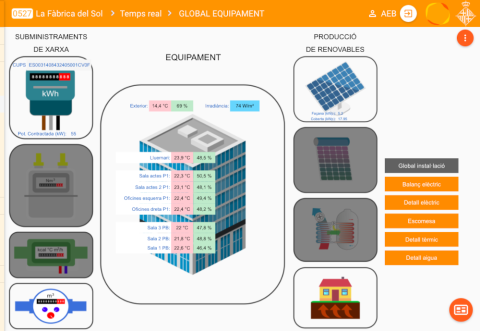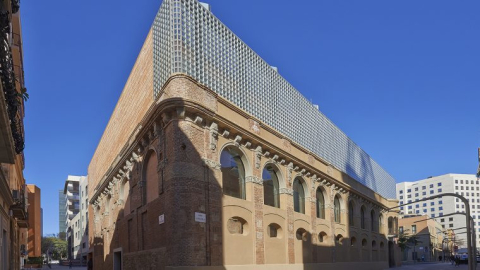The City Council is saving
Consumption by municipal buildings and facilities represents around 50% of the total municipal energy expenditure. It is therefore crucially important to take action at these facilities and save on energy and emissions. At the same time, initiatives at municipal buildings are a key tool for promoting energy-saving and efficiency measures, given the exemplary role they have for the public.
These measures are coordinated under the Municipal Building Energy Improvement Plan (PEMEEM), which aims to save energy and install renewable energies in municipal facilities, while positioning Barcelona City Council as a highly sustainable local authority when it comes to managing its own facilities.

Energy protocol
It is very important that Barcelona City Council is an exemplary model and that municipal buildings are efficient in terms of energy. In this way, beyond the regulations currently in force, newbuild buildings must also adhere to the municipal strategy.
With the aim that newly built municipal facilities become highly efficient, for Nearly Zero-energy Buildings (nZEB) it was considered appropriate to have this protocol in use. Beyond bringing together interpretation criteria for nZEBs, it is a transparent and efficient tool which can aid planners to justify the requirements in place for building projects and municipal construction projects in terms of energy.
The energy protocol sets out, amongst other questions:
- Requirement to obtain the energy rating A in the non-renewable primary energy consumption (NRPE).
- Requirement to obtain the energy score B heating demand and cooling demand indicators.
- Maximum photovoltaic renewable production beyond what is required by the regulation (latest versions of the CTE, the municipal ordinance and eco-efficiency decree).
Energy monitoring of municipal buildings
Energy monitoring is a tool which allows, amongst other things, the visualisation of behavioural models for energy consumption and, therefore, the detection of possible anomalies that often, only with changes in habits in the use of facilities, represent a very relevant energy saving. Monitoring has become a fundamental tracking tool taking into account the high number of buildings and facilities owned and used by the city council. Using this data, very efficient and accurate checks can be made of the energy behaviour at municipal buildings.
With the recent incorporation of supplies provided by the municipal operator Barcelona Energia, Barcelona City Council currently has on the display platform over 1,150 buildings being monitored, at which, amongst other measures, monitoring is taking place of energy use, comfort conditions and system operations for energy generation from renewable energies that many buildings have incorporated.
Energy monitoring is a key tool that should be used in any new building or generation facility. Mandatory use of it is stated in the energy protocol for large facilities and new municipal buildings.



Energy efficiency in schools
Schools are agents of change in the city, which is why we have been launching projects to incorporate energy into schools from an educational and practical perspective.
Lighting Master Plan
Barcelona’s public lighting only accounts for roughly 20% of the municipal service’s total energy consumption. It has over 146,000 light points which present a high disparity of criteria and models, resulting from years of various urban-planning renovations and isolated maintenance works.
Today’s management aims to generate a night-time image of the city that standardises aesthetic and functional criteria by incorporating LED technology into light points while reducing energy consumption.
If you would like to know more about Barcelona’s efficient lighting: Lighting master plan



